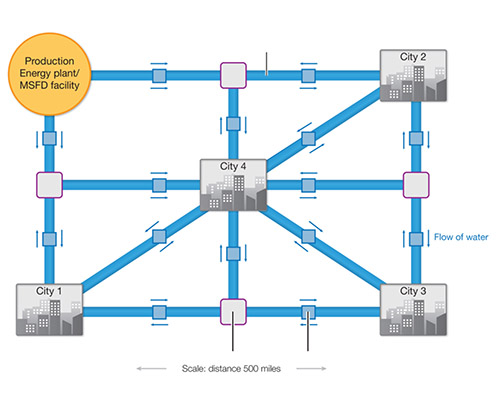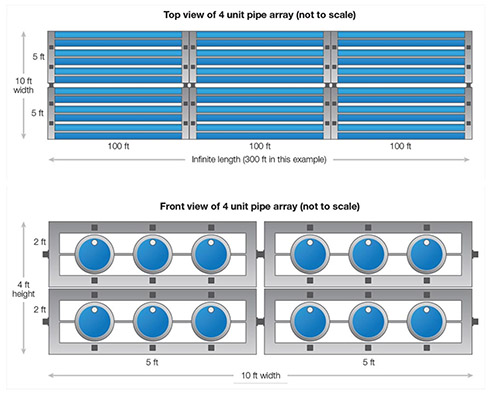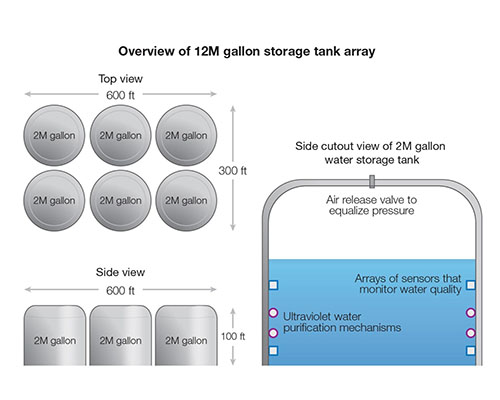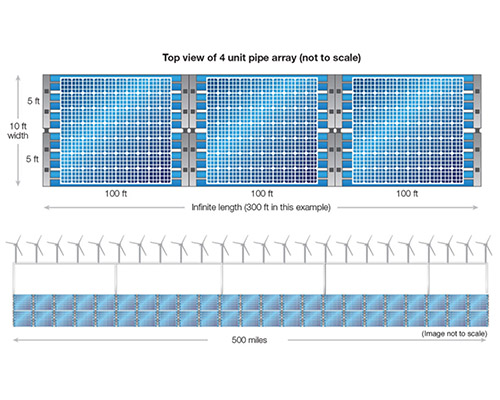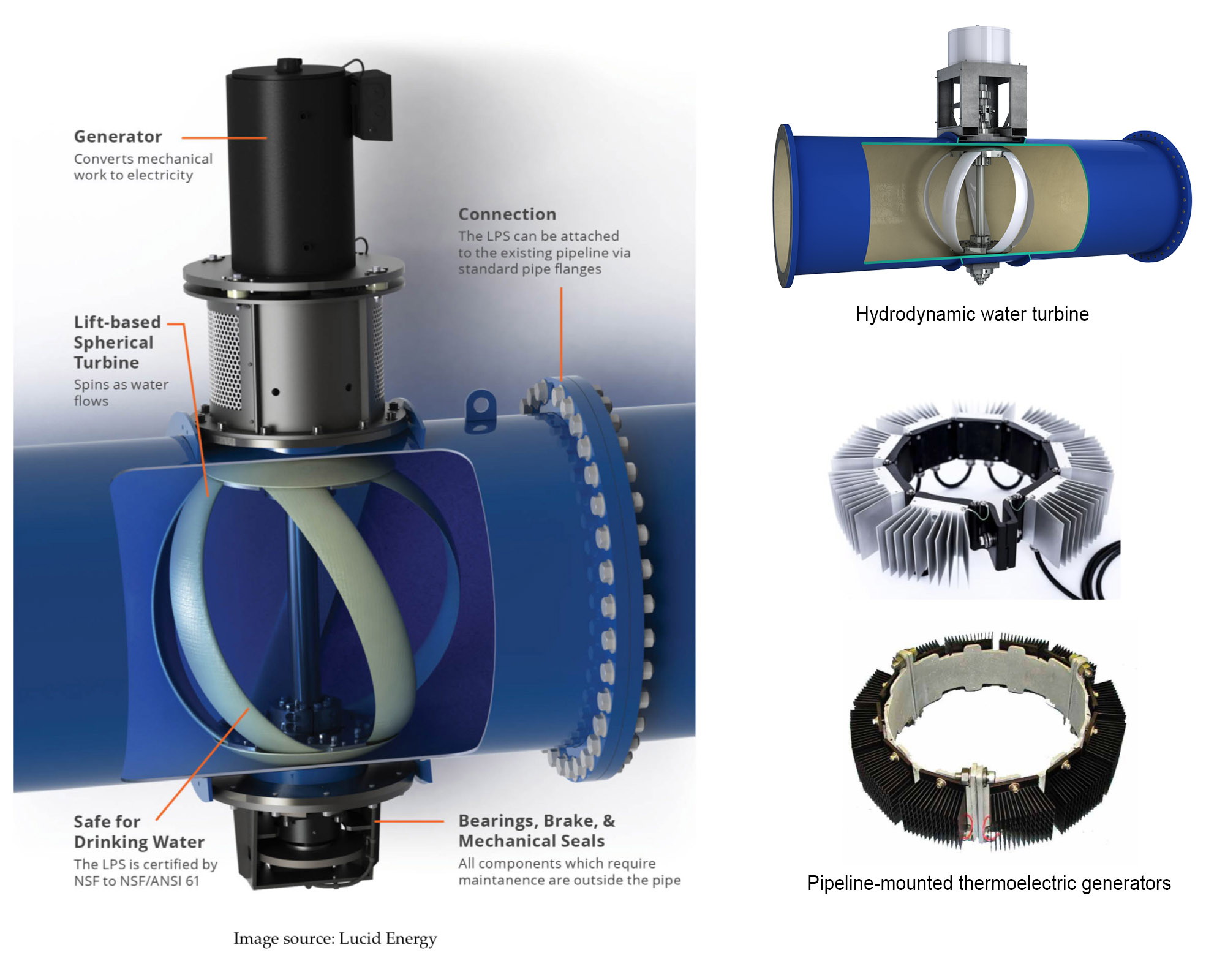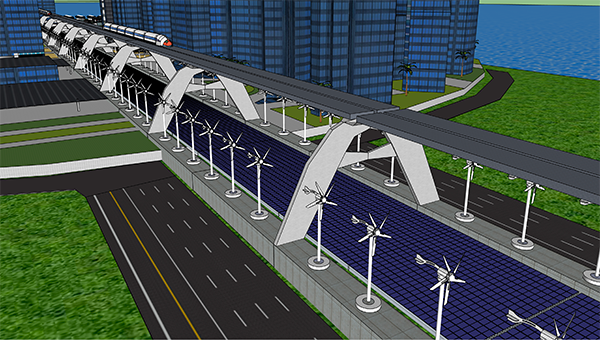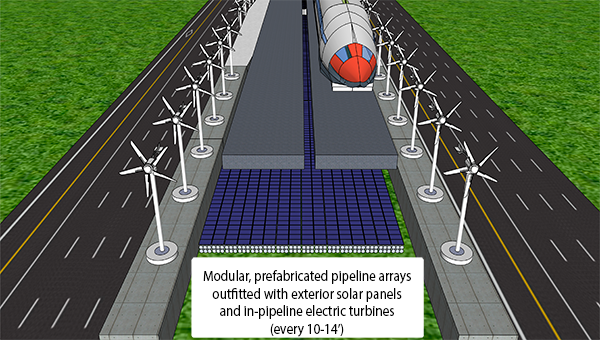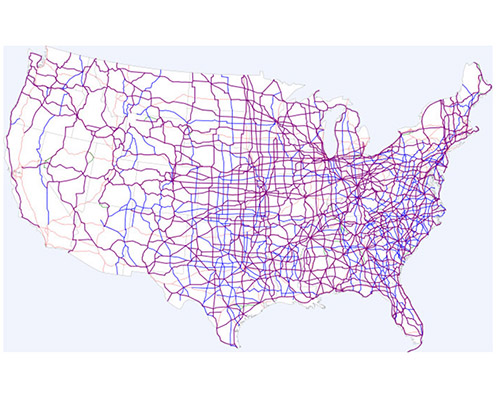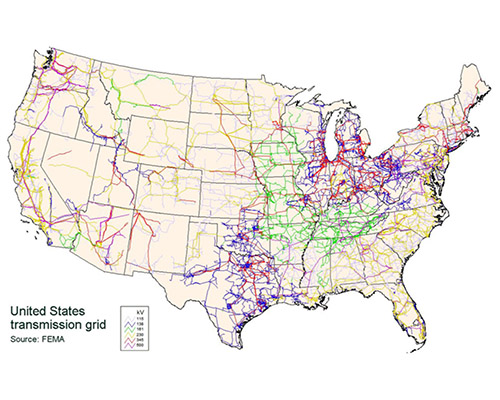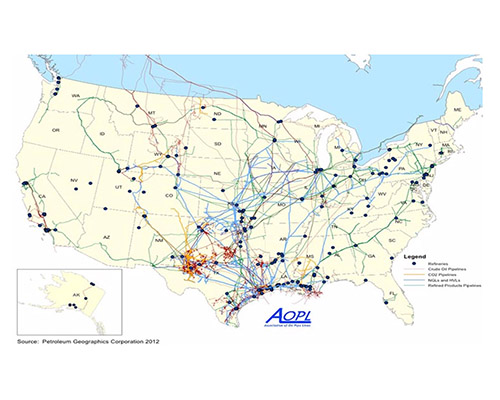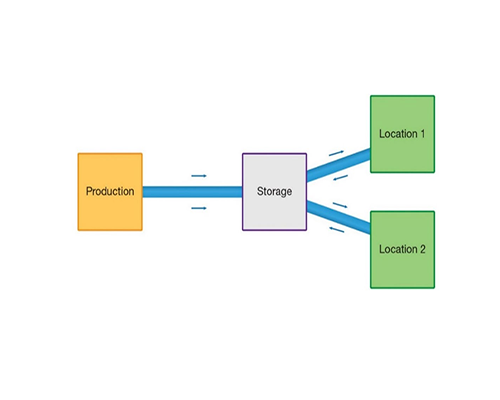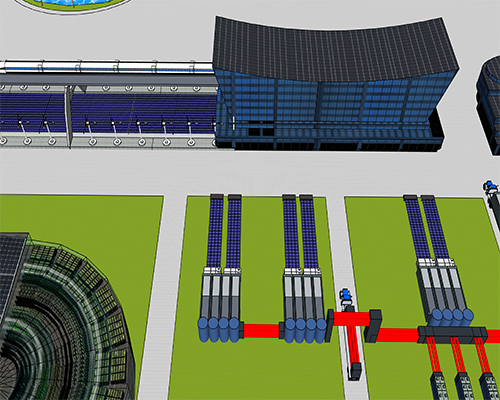- Solve drought and water scarcity anywhere in the nation.
- Operate as a fourth energy source alongside renewable cities, Small Modular Reactors and Cogeneration Facilities.
- Serve as a nationwide storage medium for renewable energy.
- Provide endless, sustainable volumes of water.
In localized regions, National Aqueduct pipelines are ideally deployed within prior-existing roads and rail networks. As shown by the following concepts, pipeline arrays (as well as modular wind turbines) can pair easily with municipal transportation infrastructure:
Further, because this space is either publicly owned or leased with the ability to grant easements for municipal use, this means such a network could be constructed with minimal site processing and removes the need to purchase additional private land - allowing cost factors to be constrained to materials, installation and operation.
With pipeline arrays installed parallel to highways, power lines and oil pipelines, strategically located storage and control facilities keep The National Aqueduct constantly resupplied with fresh desalinated water. This allows the network to deliver water based on demand through a "constant staging" approach:
To see what this looks like in practice, let us assume that on a nationwide scale the National Aqueduct would hold 500 billion gallons of desalinated water. At 90 °C (195 °F), a gallon of water holds 1,707 joules (~1,618 BTU) of potential energy. A volume of 500 billion gallons would therefore hold ~853 trillion joules (809 trillion BTU). This is equivalent to 237 billion kilowatt-hours, approximately 1/16th of the United States’ annual electricity consumption. That is from heat energy alone – saying nothing of daytime solar charge or constant charge generated from pipeline-equipped turbines. While it is of course not feasible to convert the entirety of that heat to electricity without significant reductions due to entropic forces and natural system inefficiencies, it remains a vast volume of potential energy.
These functions enable The National Aqueduct to not only transport fresh water where necessary, but also to complement and support the other power-generating methods of the Scarcity Zero framework. Because fresh water in this model would be delivered to every major population and agricultural center in the United States, it presents massive implications for both our economy and our environment:
- It would make the concept of drought irrelevant. With limited exceptions, all irrigation, agriculture and industrial water use today is deeply dependent on natural water cycles – a reality our world is becoming increasingly aware of as we overexploit Earth’s fresh water supplies. By desalinating and transporting water on a nationwide scale, we have an effectively infinite supply of fresh water for social use.
- It allows natural freshwater supplies to stabilize. Because fresh water could be sourced from The National Aqueduct in large volumes, it reduces stress on natural water supplies. Over time, this would provide a net positive benefit for our natural environment.
- It enables irrigation (and agriculture) in any location. The United States has a centralized farming model where agriculture is based in large swaths of our interior. Food is then harvested, processed and exported as a large-scale commercial enterprise. The National Aqueduct would make these ventures more fruitful and less expensive. Yet it would also do the same for effectively any location in the country – including locations where it has traditionally been challenging to farm.
Because of its decentralized nature as both a resource-delivering and power-generating system, the National Aqueduct can serve as a resilient secondary electric grid, providing yet another potent source of power while also solving drought, water scarcity and renewable energy storage needs. It's a one-two-three-four punch that can be leveraged further to grow food indoors within vertical urban farms, as well as enable the agriculture of specialized organisms that can make the base chemicals to manufacture next-generation materials.

